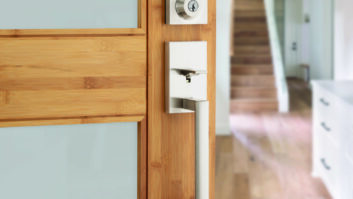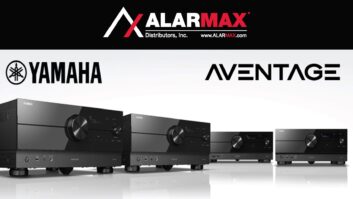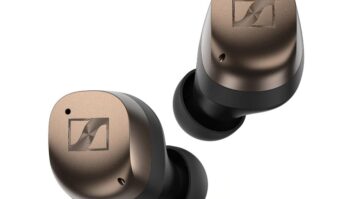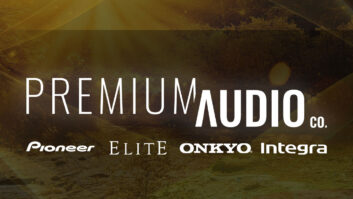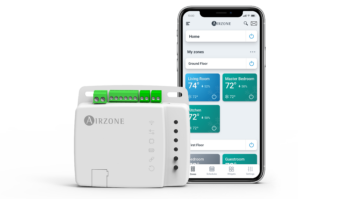TWICE:
Mobile and connectivity seem to be moving
the industry away from a single-product focus.
Michael Vitelli, Best Buy:
People want their content
wherever they want it and as simply as possible.
It’s a big part of what Best Buy is trying to do, and it’s
incumbent on all of us to show, as Dave has said, the
art of the possible.
I’ll use my wife Jody as an example: When ATMs first
came out she would rather barter a chicken than use
a machine. Now she has her iPad so she can watch
HBO Go wherever she is, and the other day she told
me we need a Jambox. I looked at her and I said, “You
know what that is?” If she’s doing that, we are on the
cusp of the human race doing that. Therefore it is very
incumbent upon us to make sure that we’re presenting
that to folks in a meaningful way so they can see what
that’s all about.
Dave Workman, PRO Group:
The one truth has
always been that we live in a business where products
will always become commodities at some point. Solutions
generally don’t. You can groan about the profitability
of television, but if you look at life cycles, margin
for every product in this business at some point
becomes pressured. Creating those value solutions
for the consumer has generally been the long-term opportunity
for profitability, outside of the early phase of
introduction of technology.
What we’re talking about here is that ability to interconnect
all of these devices, which may have very
thin margins in and of themselves. Rather than say,
“I can’t stay in this business because it’s 10 or 12
points,” retailers have to rethink what the margin yield
is to the end solution, and how they can build a business
model around that.
This is one of the areas that hold out a tremendous
amount of hope for retailers who can really tune into it.
We’re seeing a lot of changes in this business relative
to expectations of margins on the products versus the
operating margins that retailers need to stay in business.
So rather than run from the devices, embrace
them and figure out how to build a solution that you
can make some money on.
TWICE:
Best Buy is doing that with its connected
store format.
Vitelli:
We want to be able to show people what
they can do with their content on a variety of connected
lines, and people respond to it. They want to see it,
they want to experience it, and then they want to get
it. But you’ve got to show it to them.
Jim Ristow, Home Entertainment Source
(HES):
We actually beta-tested two Connected
Source stores for the independent channel. One of
the stores had three listening rooms. You don’t need
three listening rooms anymore. So we transformed the
300-square-foot rooms into seven connected zones
that the customer can walk through, see what’s available,
and where they can touch it and feel it.
It went way better than we had anticipated, and
we’re going to be rolling out 50 this year. It demonstrates
to customers what 3D is, what these technologies
are, what the Cloud really means, how they can
use it, and how they can tie that connectivity not just
to audio but to home control. And everything is completely
turnkey.
We just finalized the last part of it here at CES, so
we’re really excited about it. That whole model of experience
centers — feeling, seeing,
touching it — that’s the next
exciting retail experience.
Workman:
We’re still a little
early in terms of getting the mass
market emotionally connected to
what this new ecosystem looks like in the home. They
may know what a smart TV is, and they may know
that they can drag content out of their computer, but
they’re not emotionally aware of the concept of having
everything you want to see or hear wherever.
That will be one of the great growth opportunities
for this industry. We’re all continually asked what the
next big product is. I’m not sure we have that next singular
big product. We have a number of products that
will drive greater consumer spending, but it will also
be driven by content, experience and a whole bunch
of other things, with some of the stuff that is evolving
in our mixes today.
I tend to be an optimist about this business. Instead
of looking for the next HDTV, we’re going to see evolution
in the way all these things work together, and the
market basket will grow with that.
TWICE:
The trick is demonstrating it.
Workman:
There is still a huge amount of exposure
that needs to come through brick-and-mortar, online,
whatever venue. You have to have a lot of focus to get
that user experience demo’d in retail. It’s very easy to
leave that smart TV in the demo mode. You’ve got a
bunch of icons on a set, but if you don’t bring that customer
into what that set is capable of doing, they just
don’t connect with it, not in the same way they would
if they could really see that thing work.
TWICE:
How can online retailers convey the connected
experience on a screen?
Paul Ryder, Amazon.com:
We actually do it in a
number of ways. The manufacturers
explain the features, so there’s
always that information available
24/7, and of course there’s the
depth of the user reviews. Then
there are the videos — Mike has
done a ton of videos as well on his website. I don’t
think anyone is going to watch a 10-minute video
about all the features of a product, so what we’ve
done is offer one-minute clips of each feature for a
product. If a customer just wants to dial in on the connectivity,
like how to get music to a college-era stereo,
we’ve got a short video clip that really helps them understand
it, and shows them which products to use.
Video is actually very helpful, and it creates a more
conversational website.
If they’re still kind of confused, we also have click to-call for some of these products. You
can click a button, put in your phone
number, and our call centers will help
you better understand the features.
Fred Towns, New Age Electronics:
We’re addressing it by offering concierge
services. It’s part of a bundled
package when you’re buying a tech product.
They have a toll-free number and can
get through to one of
our own call centers
to learn how to use
that product connected
into that environment.
It comes in
as a value-add for us, obviously. We can
work with the retailer to extend that if they
want additional services in the future, or
to carry that, say, for six months or a year.
The key is the ability to take the fear
out, that if they can’t get it to work or
connect up, what do they do? Now they
have somebody to
call to walk them
through that set of
services, especially
for online customers
or broadcast
customers that bought it and are now
unsure. It brings additional services, and
it’s another way that you’re taking that
retailer home with you.





